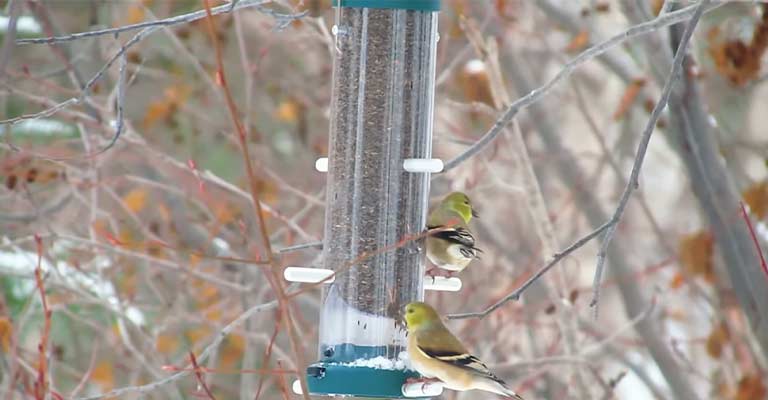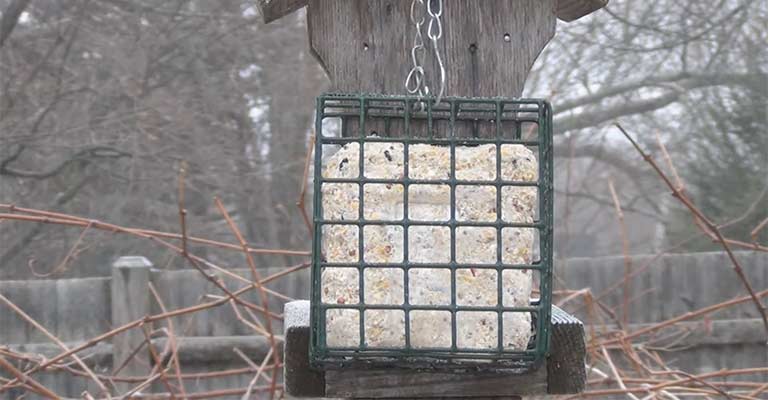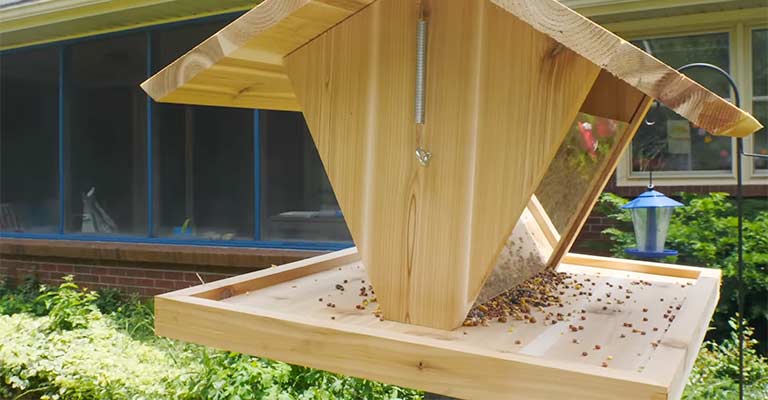Ever eagerly setting up a bird feeder only to find it devoid of feathered visitors? It’s a common puzzle that leaves many nature enthusiasts scratching their heads.
The allure of attracting a vibrant array of birds to your backyard is undeniable, but sometimes our well-intentioned efforts seem to fall flat.
In this exploration, we delve into the intricacies of avian behavior, environmental factors, and feeder dynamics to unravel the mystery behind the absence of winged guests.
From dietary preferences to feeder placement, we’ll navigate the diverse reasons why your feeder might be missing its feathered clientele.
Whether you’re a seasoned birdwatcher or a newcomer to the world of backyard birding, understanding these nuances could be the key to transforming your outdoor space into a haven for our avian friends.
So, let’s embark on a journey to decipher the enigma: why won’t birds come to my feeder?
Why Won’t Birds Come to My Feeder?

The anticipation of attracting birds to your feeder can be both exciting and frustrating, especially when those feathered friends seem to be elusive.
However, understanding the various factors that influence bird behavior can shed light on why your feeder may not be the bustling hub of activity you envisioned.
Food Selection
Birds, like any other creatures, have preferences when it comes to food. If your feeder offers only one type of seed, it might not cater to the tastes of the local bird population.
Experiment with different seed varieties such as sunflower seeds, millet, or nyjer seeds to attract a diverse range of species.
Feeder Placement
The location of your feeder plays a crucial role in its attractiveness to birds. If it’s too close to potential hiding spots for predators or too exposed, birds may feel unsafe and avoid it.
Find a balance by placing the feeder near cover like trees or shrubs but ensuring there’s enough open space for birds to approach without feeling vulnerable.
Cleanliness Matters
Birds, much like humans, appreciate cleanliness. If your feeder is dirty or the seeds have become moldy, birds might steer clear.
Regularly clean your feeder and replace seeds to maintain a welcoming environment. A clean feeding station not only attracts more birds but also contributes to their overall health.
Feeder Design
Different bird species have different feeding habits. The design of your feeder might not be suitable for the types of birds in your area.
For example, some birds prefer platform feeders, while others like tube feeders. Consider adding a variety of feeder styles to cater to the diverse needs of local bird species.
Time and Patience
Building a rapport with the local bird community takes time. Birds may not immediately recognize your feeder as a reliable food source.
Be patient and consistent in providing food, and over time, birds will learn to associate your feeder with nourishment, making it a regular stop in their daily routines.
Seasonal Variations

Bird feeding dynamics can change with the seasons. In colder months, birds may be more inclined to visit feeders for supplemental nutrition. Conversely, during breeding seasons, they might focus more on natural food sources.
Understanding the seasonal behaviors of local bird species can help you adjust your feeding strategy accordingly.
Competition with Natural Food Sources
If natural food is abundant in your area, birds may prioritize those sources over your feeder. Pay attention to the availability of insects, fruits, or other natural food options, and adjust your feeder offerings accordingly.
Presence of Predators
Birds are constantly vigilant for potential threats. If there are frequent visits from predators such as cats or birds of prey near your feeder, it could discourage other birds from approaching. Ensure the feeding area is secure and free from immediate danger to create a safe space for feathered visitors.
Environmental Changes
Environmental factors, such as sudden noises or changes in the surroundings, can startle birds and make them wary of approaching the feeder. Minimize disturbances in the vicinity to create a calm and inviting space for birds.
Species-Specific Behaviors
Different bird species exhibit unique behaviors. Some are more social and comfortable feeding in groups, while others prefer solitary dining.
Observing and understanding the behaviors of the birds in your area can help you tailor your feeder setup to their preferences.
The challenge of attracting birds to your feeder is a nuanced puzzle that requires a combination of patience, experimentation, and an understanding of avian behavior.
By addressing factors such as food variety, feeder placement, cleanliness, and the natural habits of local birds, you can create a welcoming space that entices a diverse array of feathered guests.
How to Attract Birds to My Feeder?

Attracting birds to your feeder involves creating an environment that is both enticing and safe for them. Here’s a step-by-step guide to help you maximize the chances of feathered friends visiting your feeder:
Choose the Right Feed
Understanding the preferences of local bird species is crucial. Sunflower seeds are a universal favorite, attracting a wide variety of birds.
Millet is appreciated by ground-feeding birds, while nyjer seeds are particularly attractive to finches. Suet, a high-energy source, is favored by woodpeckers and other insect-eating birds.
Select an Appropriate Feeder
Different feeders cater to different feeding habits. Tube feeders with perches are ideal for small birds, while platform feeders accommodate larger species.
Hummingbird feeders with nectar solutions are a must for attracting these fast-winged friends. Consider having a mix of feeders to accommodate the diverse preferences of local bird populations.
Optimal Feeder Placement
Finding the right balance between proximity to shelter and openness is key. Birds prefer feeders placed near trees or shrubs where they can perch and survey the surroundings for safety.
Ensure that there is enough space for them to approach and depart without feeling exposed to potential predators.
Maintain Cleanliness
Regular maintenance involves cleaning your feeder every few weeks. Remove old or moldy seeds, scrub the feeder, and disinfect it to prevent the spread of diseases. A clean feeder not only attracts more birds but also promotes the health of the feathered visitors.
Fresh Water Source
Birds need water for both drinking and bathing. A birdbath or a water dish near the feeder provides an additional attraction.
Ensure that the water is clean and refreshed regularly. This adds an extra dimension to your bird-friendly environment, especially during warmer seasons.
Landscaping for Birds
Integrate bird-friendly plants into your landscaping. Native plants that produce berries, and seeds, or attract insects provide natural food sources. This enhances the overall appeal of your backyard, creating a more inviting space for birds to explore.
Be Patient and Consistent
Building trust with birds takes time. Consistency is key in establishing your feeder as a reliable food source. It may take a few weeks or even months for birds to recognize and trust the new addition to their environment, so patience is a virtue in birdwatching.
Adjust for Seasons
Understanding the seasonal patterns of bird behavior helps you tailor your feeding approach. In winter, when natural food sources are scarce, birds are more likely to rely on feeders.
During breeding seasons, they may prioritize insects and fruits. Adjust your offerings accordingly to meet their changing dietary needs.
Minimize Disturbances
Birds are sensitive to disturbances. Minimize loud noises and sudden movements around the feeding area. Additionally, ensure that potential predators, such as outdoor cats, are kept at a distance. Creating a calm and secure space encourages birds to feel at ease.
Offer Shelter
Birds appreciate sheltered spaces. Birdhouses strategically placed near the feeder can provide additional protection.
Dense vegetation or strategically positioned branches offer places for birds to retreat if they feel threatened, further enhancing the sense of safety around your feeder.
By integrating these practices, you create a comprehensive and bird-friendly environment that appeals to a diverse range of species.
Observation, adaptability, and a genuine appreciation for the avian visitors will enrich your birdwatching experience. Enjoy the beauty of nature right in your own backyard!
FAQs
Why aren’t birds coming to my feeder?
Birds might be avoiding your feeder due to factors like unappealing food choices, an unsuitable feeder design, or poor placement. Assess these elements and make adjustments to create a more inviting setup.
How can I attract specific bird species to my feeder?
Tailor your feeder offerings to the preferences of the desired species. Research their favorite foods and provide suitable feeders. Additionally, consider planting native plants that attract specific birds to your garden.
Should I feed birds year-round?
Yes, maintaining a year-round feeding schedule is beneficial. While birds may rely more on feeders during harsh weather, providing food consistently fosters a sense of reliability, encouraging them to visit regularly.
Are there natural alternatives to commercial bird feed?
Absolutely. Planting bird-friendly vegetation, such as berry-producing bushes or seed-bearing plants, provides natural food sources. Installing a birdbath also attracts birds seeking water for drinking and bathing.
How do I prevent squirrels or other pests from raiding the feeder?
Choose feeders with built-in anti-squirrel features, like baffles or weight-sensitive perches. Placing the feeder on a pole away from jumping points and using safflower seeds (less attractive to squirrels) are additional strategies to deter pests.
Conclusion
The quest to attract birds to your feeder is a multifaceted adventure. By considering factors such as food choices, feeder placement, and the surrounding environment, you can create an inviting haven for your feathered neighbors.
Patience is crucial in this endeavor, as birds may take time to discover and trust your feeder. Experimenting with different seed varieties and feeder styles allows you to tailor your setup to the preferences of local bird species.
Remember, each avian visitor brings a unique charm to your backyard, and the satisfaction of finally seeing them flock to your feeder makes the journey worthwhile.
Be patient, experiment with feeder setups, and let the beauty of nature unfold in your backyard. With a bit of knowledge and a touch of perseverance, you’ll find that the allure of feathered guests is well within reach. So, embrace the learning process and adapt your approach.